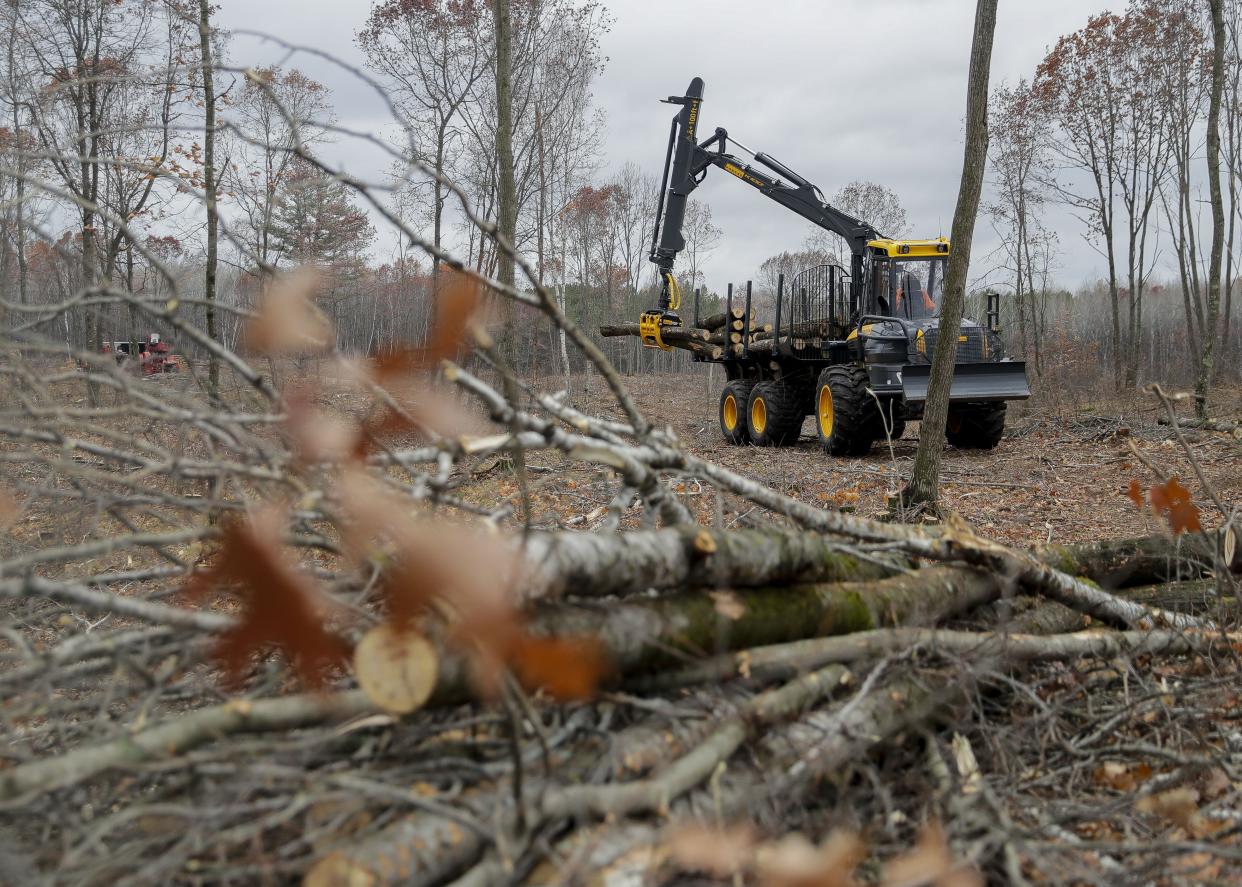Stevens Point researchers study new ways to use northern hardwood after 2020 mill closure

STEVENS POINT — When the Wisconsin Rapids mill closed in 2020, it left a void in Wisconsin's forest products industry. Loggers struggled after suddenly losing such a major consumer of the region's pulpwood.
Now, local researchers are studying different ways that mills could potentially use hardwood timber from northern Wisconsin, according to Paul Fowler, executive director of the Wisconsin Institute for Sustainable Technology at the University of Wisconsin-Stevens Point.
"We've got a substantial resource right on our doorstep," Fowler said, that's being "underutilized."
The work is made possible by a $100,000 grant that the Stevens Point university received last year through the federal Wood Innovations Grant Program. Fowler's institute also matched $100,000 in state funds, he said.
Details were finalized earlier this year, and researchers are ready to get started, according to Fowler, who's working on the project with Roland Gong, associate professor of paper science and chemical engineering, and students.
USA TODAY NETWORK-Wisconsin spoke with Fowler earlier this month about the research and what it could mean for local industries.
How could Wisconsin's hardwoods be used?
The team will study the "technical feasibility" of using regional hardwood, such as maple, for specialty pulps, according to Fowler.
One possibility, he said, is with tissue and towel products. Another, Fowler said, is through high-end printing and packaging grades that are used for things like cosmetics.
What are some of the hurdles to using hardwood?
Researchers will work with the Wisconsin Paper Council and its members, Fowler said, to analyze the “broad challenges and opportunities of diversifying the use of northern hardwoods."
For instance, he said, what changes would mills have to make? How does the cost compare to other fiber sources? What are the market dynamics?
Few mills in Wisconsin still make their own pulp. Some import eucalyptus, and other types of pulp, from the southern hemisphere and other places, according to Fowler.
More: Wisconsin loggers hope new cooperative effort can help industry after mill closures
There's also been a trend in the broader paper industry to use more recycled fiber in products. But "paper isn’t infinitely recyclable," Fowler said, and there's still a need for virgin fiber for products.
"Our contention is, isn't it better that that pulp comes from Wisconsin or the Midwest?” he said.
How about the benefits?
Fowler sees opportunities in supporting local jobs. There's also the environmental benefit of reducing companies' carbon footprints. Sustainable forestry practices create healthy forests, he said, and having commercial outlets for products is important.
"It’s not just about loggers and haulers and paper," Fowler said. "It's about recreating in those areas. It's about the vitality and the vibrancy of those communities that ... make their livelihood from that."
More: Why tissue, packaging and specialty papers look promising for Wisconsin's paper industry
As researchers study what's possible, Fowler understands that changing a pulp source is a significant business decision for companies.
"But what we want to do is, is just lay all the evidence on the table and say, 'Look, here are reasons to do this,'" he said.
Another question to consider, Fowler said, is, "What happens if we don't?"
Reach Becky Jacobs at bjacobs@gannett.com or 920-993-7117. Follow her on Twitter at @ruthyjacobs.
This article originally appeared on Appleton Post-Crescent: University of Wisconsin-Stevens Point receives Wood Innovations grant

